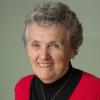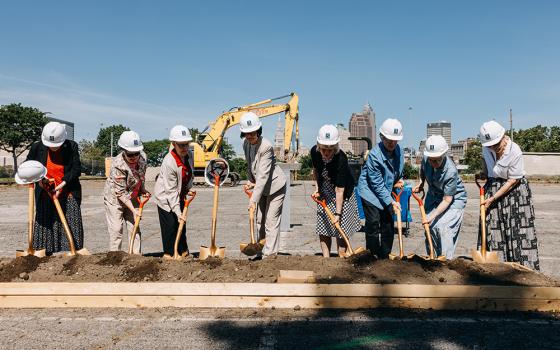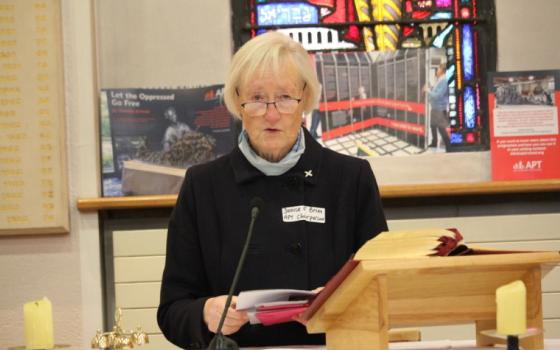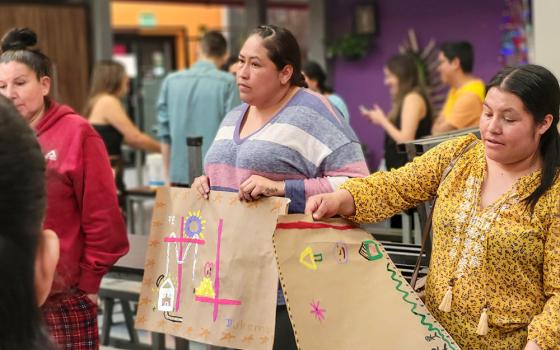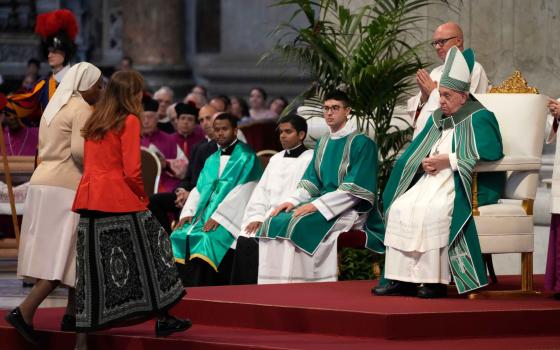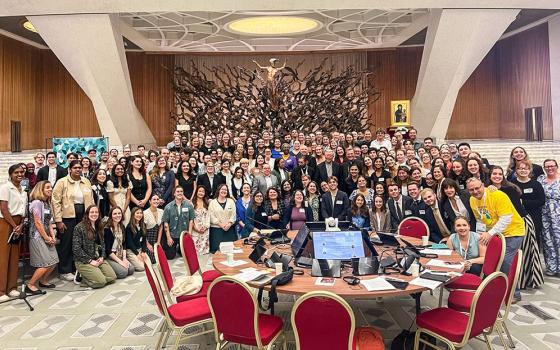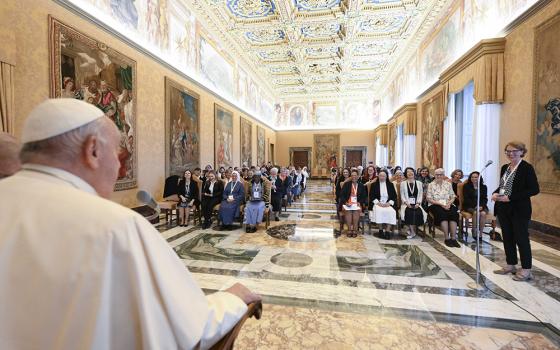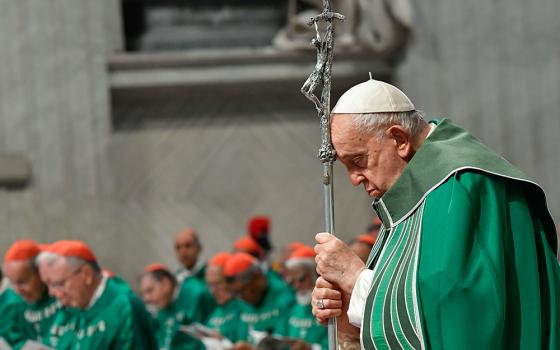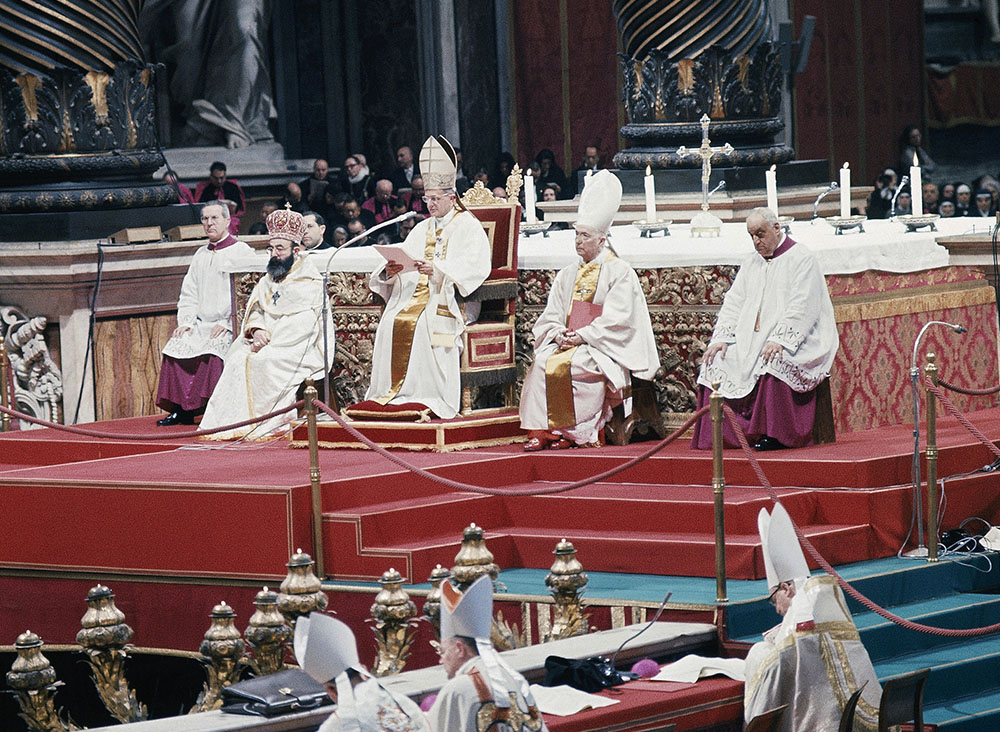
Pope Paul VI proclaims the last decrees of the Second Vatican Council, sitting on his throne before the papal altar under Bernini's bronze canopy in St. Peter's Basilica in Vatican City, Dec. 7, 1965. (AP)
The word synodality has been around a year or so now and people are still asking what it really means — for them, of course. The last time the church said it was going to make changes was in 1965. Fifty-eight years ago. In the meantime, all the changes to be seen were basically meaningless ones. Not because change was forbidden. On the contrary.
The Vatican documents of 1965 oozed theological life. They were clearly meant to dispense with the church of the Middle Ages, to bring the church into the modern world rooted in Scripture and the model of Jesus.
But as the ocean liner that brought so many of the American Catholic hierarchy back from Rome disembarked, the New York press corps, snapping pictures and shouting questions, suffered one bishop after another shrugging their questions off. Nothing had really changed, it seemed. Nothing newsworthy, at least.
In essence, the assumption was correct. Whatever changes the people had wanted from the 1962-65 Second Vatican Council were, it seemed, formless, silent, lost in the bustle of a busy church frozen in a medieval mind. Instead, after 400 years without a council of reform, the kinds of changes the people had expected from this council lay yet in Rome, drying in wet ink there and largely ignored here.
Why did nothing change when change was called for? The bishops from around the world who attended Vatican II voted yes for all of its documents, but once back on home soil, many simply ignored them, that's why.
Even more to the point, few, if any, priests taught the council documents to their congregations. Few if any priests admitted that they themselves had not bothered to read the documents either.
Oh, a few churches redesigned their confession boxes and a few more took down the altar rails, but really, other than that and the move to the vernacular in all liturgical events — nothing much did happen. Most of the changes were window dressing.
No one talked about reunion with the Christian family of multiple denominations, for instance. No one moved to include women as fully baptized members of the church.
Lay consultants and episcopal advisers, quickly chosen, were disposed of in short order. The lay ministers that had been so long awaited were educated in local seminaries by the thousands and then shrunk quietly away in great numbers, too, as fewer and fewer of them were really deployed in the ministry of the church itself.
Advertisement
The male church in large part stayed male despite the few women allowed in minor offices like readers or altar servers "as long as men were not available." The prayers and pronouns of the church pronounced the church to be male in every particle while women remained invisible and left the church in large numbers quietly now.
Why did nothing change when change was called for?
Well, to be clear, the 2,000-2,500 bishops from around the world who attended this 21st ecumenical council voted yes for all of its documents, but once back on home soil, many simply ignored them, that's why.
The two popes, John XXIII and Paul VI, who had led the way to these times died. The popes who had called the Second Vatican Council to bring the church into the modern world lived on in the hearts of the new church in the pews.
But both Pope John Paul II and Pope Benedict XVI resisted the full force of Vatican II. Though they never denounced the council, they never really promoted it either.
This synodality is different. This time, Pope Francis is having the faithful themselves become part of the agenda-making process before the synod even convenes. The laity has been invited into the intellectual theology of the church rather than simply poised to bring pious concern to the event.
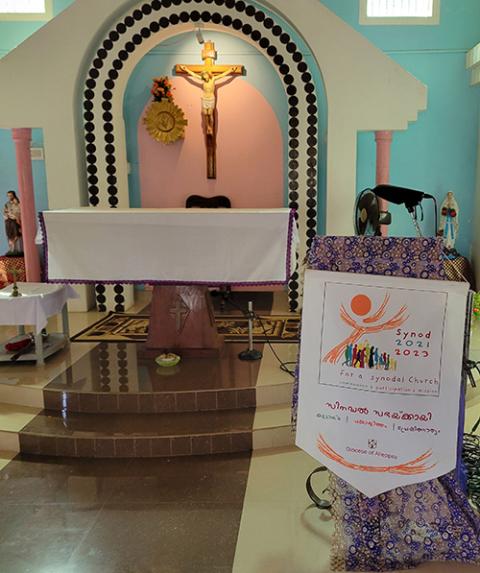
A banner for the Synod of Bishops on synodality is seen in St. Anthony Mission Station in Ambalapuzha, India, March 5. The synod team for the Alleppey Diocese worked to make sure all parishes were involved in listening sessions for the synod. (OSV News/Barb Fraze)
This time, the laity themselves have been deemed to determine what topics must be considered — married priests, genderism, marriage theology, equality, women priests, whatever. They will be allowed to speak to what 99% of the church rather than the 1% of the church, its clerics, allow to be heard.
In fact, churches all around the world have been gathering and detailing the items the people themselves want to see considered for timeliness, for growth, for equality. The German church, in fact, has gone so far as to film the gathering of the topics from German congregations that will be sent to Rome as the skeleton for these discussions.
Two weeks ago, I sat in front of my television for several hours and listened to the topics each of the dioceses wanted addressed at the synod in Rome. One at a time, representatives from the entire region read out the topics and the numbers of their groups who most wanted particular topics to be considered by the modern church at this new conciliar process called "synodality."
I got a chill. I was listening to a drumbeat of human issues that were separating people from the church, from support, from holiness in this day and age. The drone I was hearing was clearly the drone of the Holy Spirit: "Group A: Married priests ... women priests ... deaconesses ..." — topics from every nook and cranny in the area over and over again.
Francis had managed to involve Catholics around the globe in this common search for communal and spiritual growth.
Clearly, the meaning of synodality means that we must listen to one another, to the entire church, in all parts of the world for a Scripture-based following of Jesus rather than to the rules of a canonical institution. Instead, this church was honoring the human cry for human support in every corner of the globe.
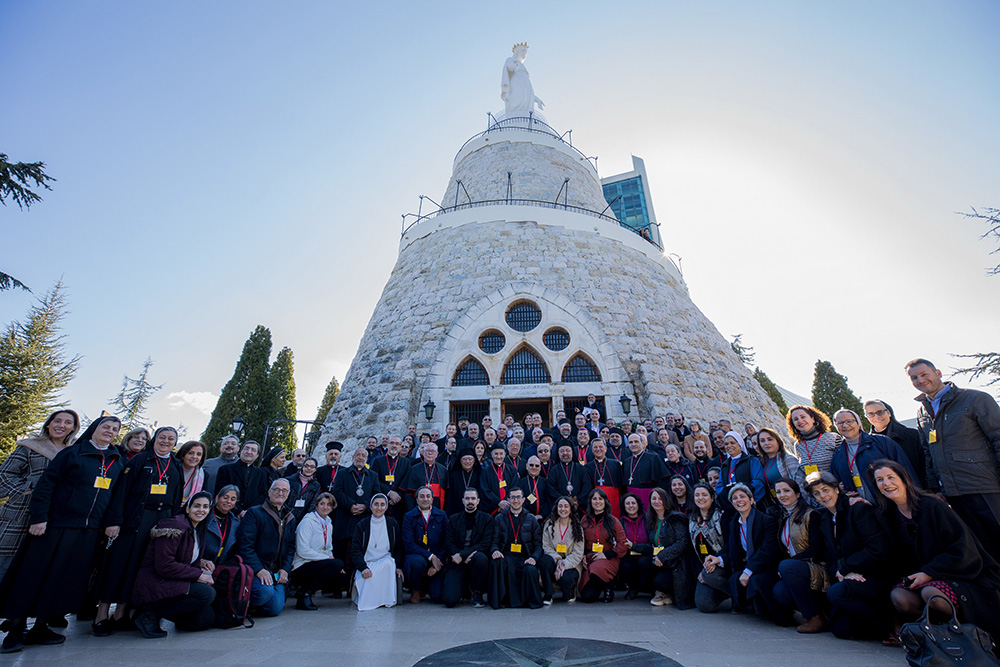
Participants in the Continental Synodal Assembly for the Middle East visit the shrine of Harissa, Our Lady of Lebanon, north of Beirut. The assembly was held Feb. 13-17 with representation from the seven Eastern Catholic Churches — Maronite, Melkite, Syriac, Chaldean, Coptic, Armenian and Latin. (OSV News/Courtesy of Maronite patriarchate/Mychel Akl)
I remembered as I sat there how my mother and father — she a young Roman Catholic widow and he a lapsed Presbyterian — had to slip into a dark sacristy one Saturday afternoon to get their "mixed marriage" fixed. Why? Who knows. So she could go to heaven, I guess. As if their marriage was itself sinful.
Not anymore.
The word synodality is the call to consider these evolving topics by listening, by trusting, by coming together as one single-hearted voice of God's presence in our lives as one era turns to another again.
From where I stand, synodality is a call to communion, to confirmation of the faith over the form, to holiness rather than to hierarchical power and the continuing condemnation of the two thieves, whoever they may be. It is a new model of a church that has known for centuries that this was meant to be its earlier and most effective way of following Jesus.
It is a model of Jesus and the apostles sitting on the wall of the synagogue just waiting for the chance to spread God's love and healing and care and compassion to the masses. Waiting to heal the Roman soldier, to make the Samaritan woman the apostle to the world as Jesus had ordered her to be, to feed one another always, and, in the end, to grow together.
The poet Christina Rossetti knows what it is to be caught between what should have been done but was not. And her answer is one that synodality understands: "Can anything be sadder than work left unfinished?" she writes. "Yes," she writes again: "work never begun."
May this council truly begin what the world is waiting for lest the Catholic world gets stopped in its tracks by those who do not want the church to grow with the world.
